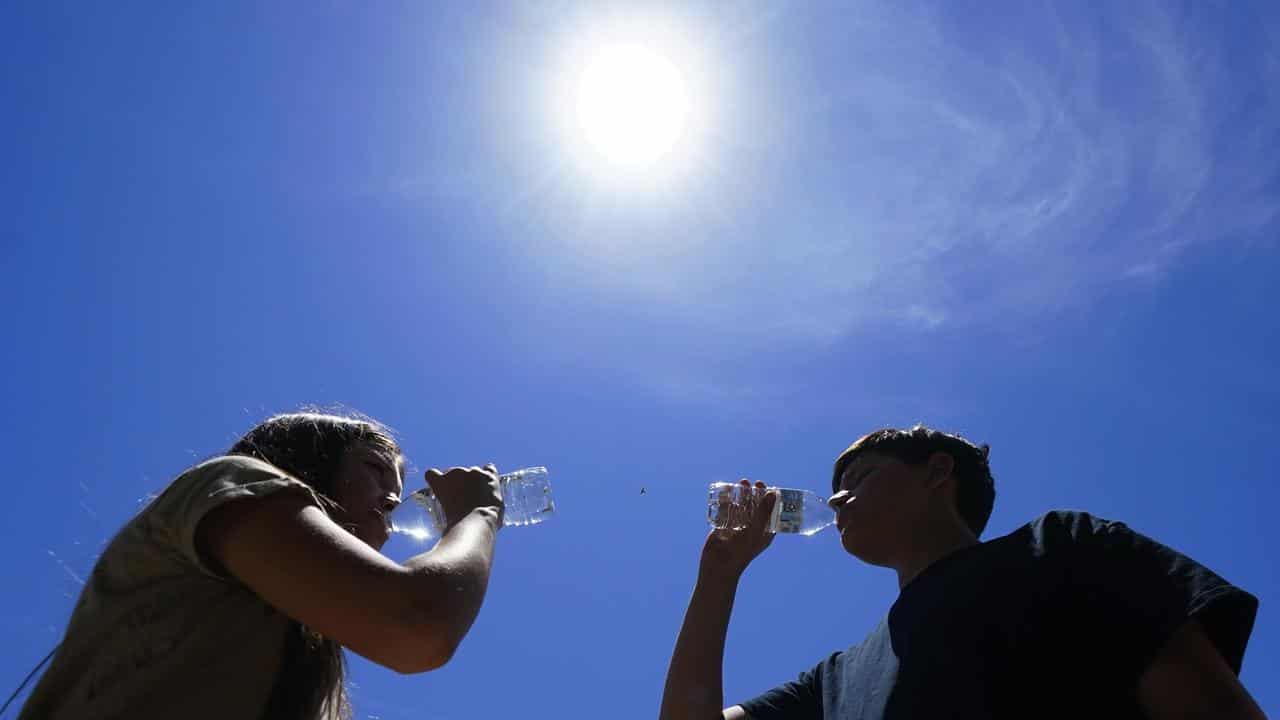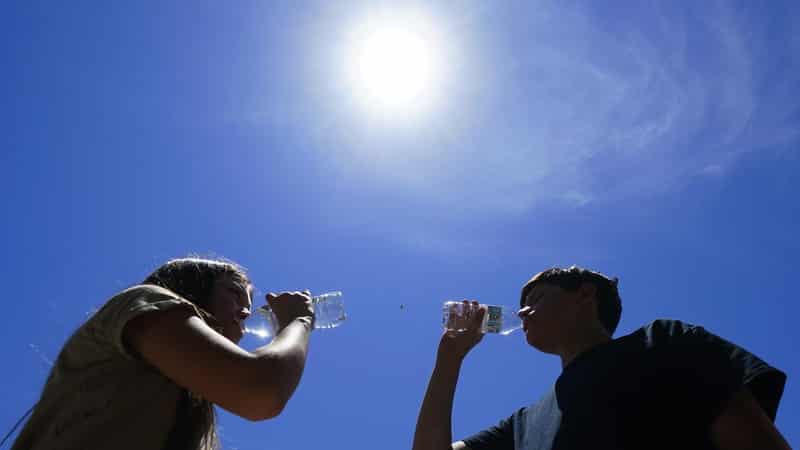
Phoenix has sizzled through its 31st consecutive day of at least 43.3C while other parts of the United States grappled with record temperatures.
The National Weather Service said Phoenix climbed to a high of 43.8C on Sunday.
July has been so steamy that scientists calculate it will be the hottest month ever recorded and likely the warmest human civilisation has seen. The World Meteorological Organization and the European Union’s Copernicus Climate Change Service have proclaimed July beyond record-smashing.
The historic heat began blasting the lower southwest US in late June, stretching from Texas across New Mexico and Arizona and into California’s desert.
On Sunday, a massive wildfire burning out of control in California’s Mojave National Preserve spread rapidly amid erratic winds, while firefighters reported progress against another major blaze to the south that prompted evacuations.
The York Fire that erupted on Friday near the remote Caruthers Canyon area sent up a huge plume of smoke visible nearly 160km away across the state line in Nevada.
Flames six metres high in some spots have charred more than 284 square kilometres of desert scrub, juniper and Joshua tree woodland, according to an update.
“The dry fuel acts as a ready ignition source, and when paired with those weather conditions it resulted in long-distance fire run and high flames, leading to extreme fire behaviour,” authorities said. No structures were threatened, but there was also no containment.
Triple-digit heat was expected in parts of the central San Joaquin Valley through Monday, according to the National Weather Service.
In Burbank, California, the summer heat may have been responsible for some unusual behaviour in the animal kingdom: police responded to a report of a bear sighting in a residential area and found the animal sitting in a Jacuzzi behind a house.
As climate change brings hotter and longer heatwaves, record temperatures across the US have killed dozens of people, and the poorest Americans suffer the most. Air conditioning, once a luxury, is now a matter of survival.
Last year, all 86 heat-related deaths indoors were in uncooled environments.
“To explain it fairly simply: Heat kills,” said Kristie Ebi, a University of Washington professor who researches heat and health. “Once the heatwave starts, mortality starts in about 24 hours.”
In Phoenix, slight relief may be on the way as expected seasonal thunderstorms could drop temperatures on Monday and Tuesday.
“It should be around (42C), so we break that (43C) streak,” meteorologist Tom Frieders said. “Increasing cloud cover will put temperatures in a downward trend.”
The relief could be short-lived, however. Highs are expected to creep back to 43.3C on Wednesday with temperatures reaching 46.1C by the end of the week.









